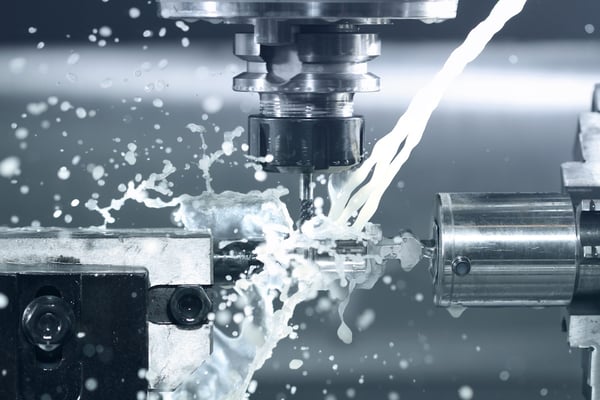
Almost every product we use today requires massive amounts of water for production. On an elementary level, the process of refining and producing raw materials such as metal, fuel, oil, lumber, chemicals, paper, and plastic demands water.
In addition, the manufacturing process by which those raw materials are transported and transformed into consumable goods also requires large volumes of what’s known as industrial water. Within a single manufacturing facility, industrial water may be used for production (fabrication, washing, cooling, boiling, etc.), sanitation (of the facility, personnel, and equipment), or as a raw material in the product itself.
Producing just one T-shirt requires 659 gallons of water—enough to sustain an adult person for approximately 1.8 years at the recommended drinking rate of one gallon per day. Although that may seem like a lot, that number is relatively low for modern manufacturing. A smartphone, in contrast, takes 3,190 gallons of water to produce—enough to fill a small above-ground pool.
Needless to say, water management is crucial in manufacturing, regardless of industry. In order to produce goods, businesses must have a reliable means of sourcing clean water, monitoring water quality, and disposing of wastewater—one of the biggest byproducts of manufacturing.
Industrial Water Quality Standards
Maintaining the quality of industrial water is exceptionally important for food and beverage and pharmaceutical industries where the end product is intended to be ingested by the consumer. If water is contaminated at any point in the production process, there’s a substantial risk that the pollutant will be transferred into the product and cause harm to the end consumer. For this reason, water treatment processes and quality standards for food, beverage, pharmaceutical, and medical products are highly regulated by the Food and Drug Administration (FDA). Aside from potential health risks, using contaminated water to produce non-edible goods can also alter the fundamental properties and quality of the product in question.
Wastewater Management
Large-scale manufacturers typically install industrial wastewater treatment technology and filtration systems into their manufacturing plants so that wastewater doesn’t need to be transported offsite in order to be sanitized. Although these solutions are engineered to automate the sanitation process, they still require man power to operate and ensure consistent results.
Once industrial wastewater is properly sanitized, it can be released into a sanitary sewer (clean underground water transport system) or into the surface water of the surrounding environment. The quality and volume of water that may be released into lakes, rivers, and wetlands is highly regulated and usually overseen by local governing bodies. These checks and balances are aimed at protecting the health and integrity of the surrounding ecosystem.
More and more companies are opting to recycle water after it’s been properly sanitized to reduce water-related costs and create a more sustainable brand image. Regardless of whether the water is being released or reused, careful water quality testing is necessary before the production cycle can be completed.
Water Quality Monitoring
To guarantee the cleanliness of the water used in production, manufacturers will frequently test water at different junctures in the manufacturing process and track any changes that occur therein. In an industrial-scale operation, in-line water quality testing monitors, analyzers, controllers or transmitters are typically installed into all water receptacles to provide an efficient and consistent means of data collection. The water quality data from these in-line instruments can be stored for manual extraction or relayed directly to a computer, where trained personnel can analyze the data for anomalies and ensure that the water is up to code.
In-line water quality monitors, analyzers, controllers or transmitters are also used post-production to test water that’s been sanitized before it’s cleared for release or reuse. By monitoring factors such as oxidation reduction potential (ORP), temperature, pH, conductivity (CON), dissolved oxygen (DO), and turbidity, manufacturers are able to determine if there are any residual contaminants in the water and if it is sanitized in accordance with federal and local regulations. If the water shows signs of contamination, water quality readings should be used to inform what adjustments are made to the sanitation agents and process to resolve the issue.
Choosing an In-Line Water Quality Meter
Before purchasing an in-line meter, be sure to research federal and local industrial water quality standards for your area on the United States Environmental Protection Agency and FDA website. To learn about Jenco’s variety of in-line meters, compare features, and locate a distributor, simply click the link below.

Comments